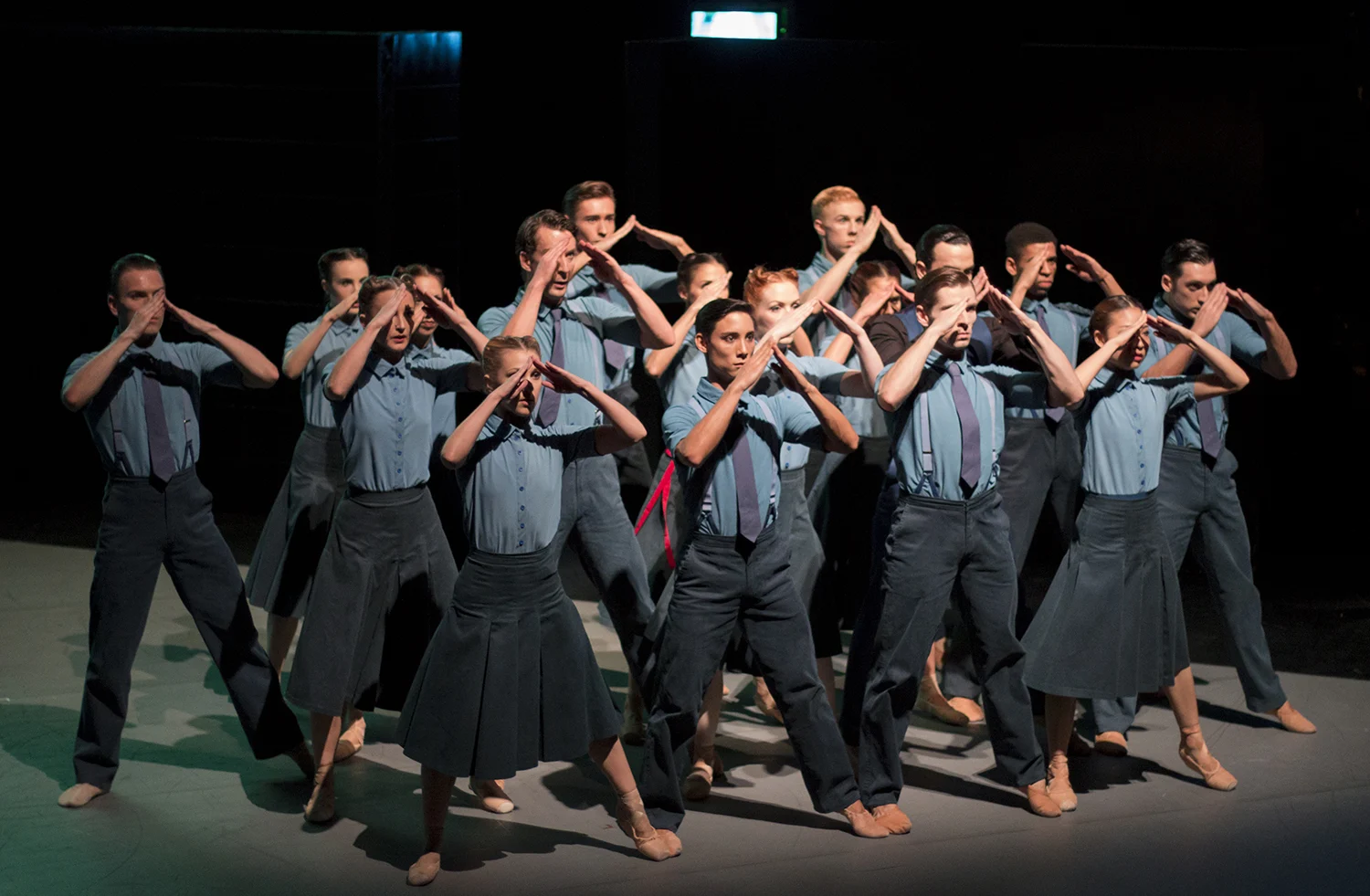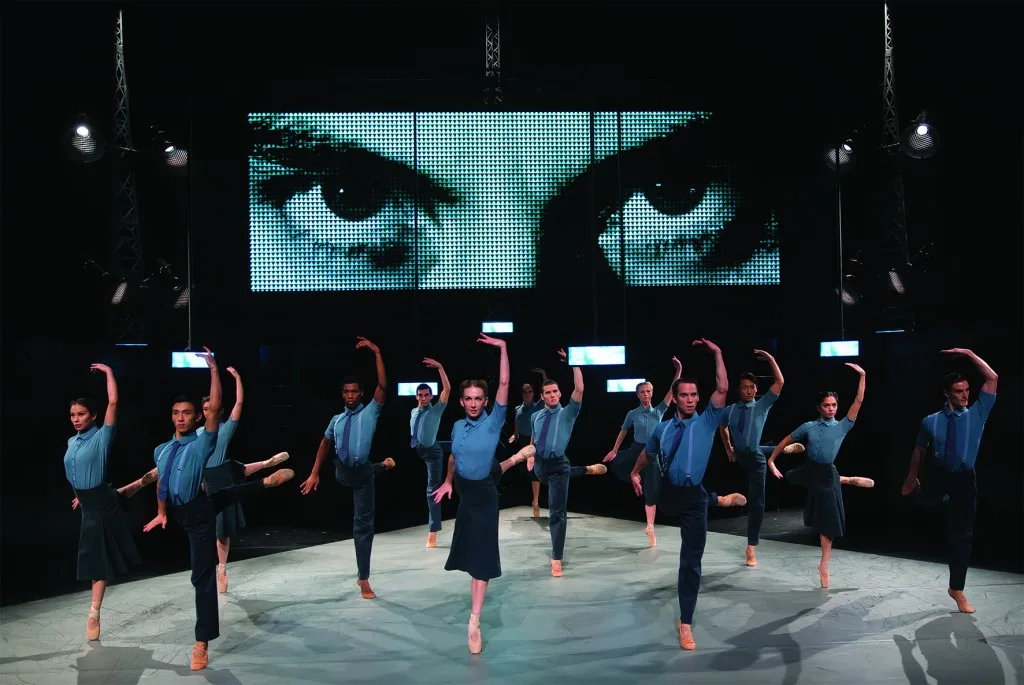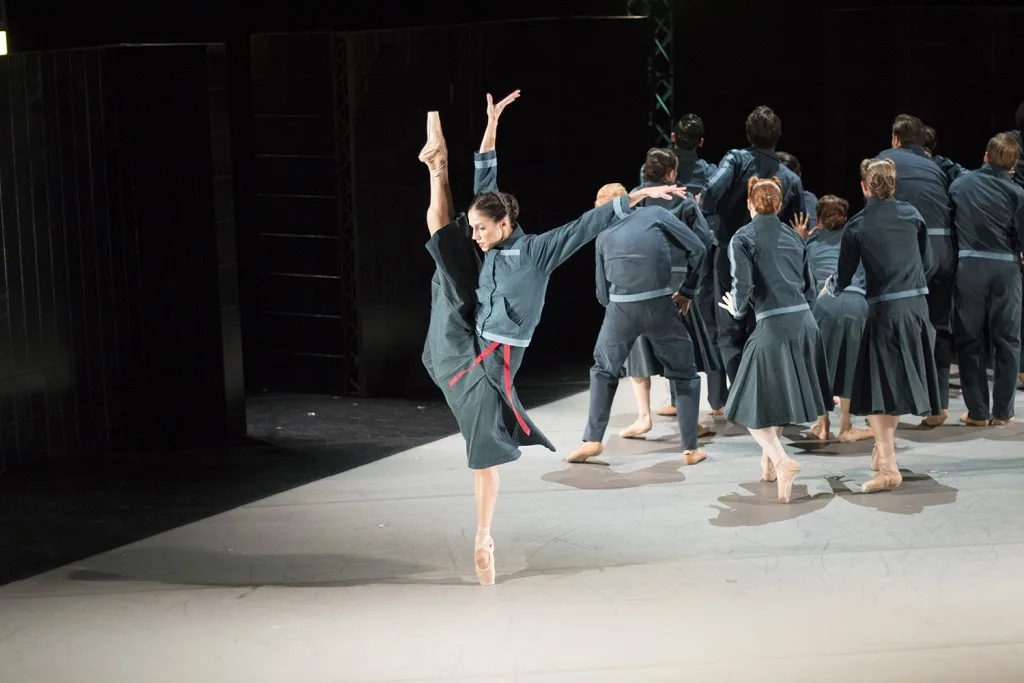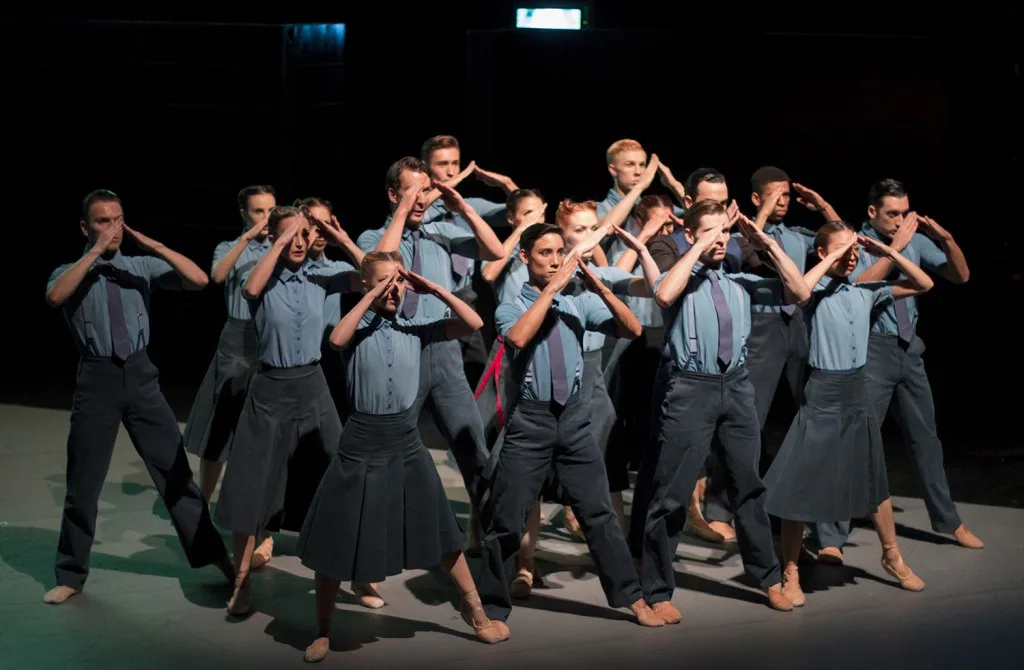

George Orwell’s 1984 is one of the defining books of the 20th Century, and it continues to resonate well into the 21st. It’s a dystopian nightmare about a society where surveillance and control is everything at the expense of privacy, individuality and emotional connection. The subject matter is one reason why the story makes for an unlikely ballet; the other is that Orwell is one of the master craftsmen of the English language. Adapting it into a wordless artform seems sacrilegious.
But that’s what choreographer Jonathan Watkins did, taking a book he has been fascinated by since his teens and turning it into an incredibly atmospheric performance piece for Northern Ballet. The Space then worked with director Ross MacGibbon to produce a full-length film of Jonathan’s creation which is available to stream in its entirety on WeTransfer for the next few weeks. We caught up with Jonathan over Skype to discuss the process of bringing such a famous book to life in an entirely new way…

First of all congratulations on such a brilliant piece of work, I’m not really a ballet fan at all but I was blown away…
As an artist in this genre, I love the different reactions to it. Nothing’s right, nothing’s wrong – like all art really. It’s all about your interpretation and what you get out of it.
Obviously with no words there are certain parameters in terms of storytelling, but I am really pleased with it, and with how it’s been captured for the screen. That is always a balance in dance because obviously when you go and see a performance, you do your own edit but the way this production is filmed, it’s a really good director’s cut of the show.
You can’t replicate the reverberation of live music in the space that you’re in. But the nature of the production lent itself to being filmed, and to be honest there are some bits I actually like better in the film.
Why does this story still capture people’s imaginations?
Everyone has got their own take on it. I don’t know what the ingredients are. Is it because history repeats itself and you can always find things that are relevant whenever you read it?
There are many elements in the book people can draw comparisons to – that’s why it’s a modern classic.

What made you believe this was a story that could, or should be translated into a ballet?
I thought it was an exciting thing to do in the world of dance. In ballet there are a lot of traditional love stories, a lot of fairy tales. In that sense it was exciting to create something new from a book that people thought, “How are you going to do that?”
For the context of this genre I did ramp the romantic element of Julia and Winston, but I felt I had to get this contrast between the uniformed, military unison of how the mass behave under surveillance – which I thought was interesting for the dance element – but also Winston meeting this other person who might help him, and how that relationship progresses. Those two elements were enough for me to take it on.
When you are adapting something like 1984, how do you balance staying faithful to Orwell’s vision and putting your own creative stamp on it?
It is a challenge, but narratively I stayed really close to the book. And from that framework, it lifts into design, music and the filming and that goes into creating the world of the production.
Every single scene we went back to what Orwell wrote in the text, but there is a moment in the process where you have to say, “This is our interpretation of the story.”
When I was working with Toby, who plays Winston, he knew the book and the Winston Smith that Orwell wrote. It’s my job to facilitate his character within this production – we had to find our Winston Smith. And in ballet you can see things that are beyond words, the physical atmosphere that is created with bodies and movement.
I have done this before with A Kestrel for a Knave, which became the Ken Loach film Kes. When there is a certain ownership of a story already, that brings certain challenges. But if people love the material and they are open to a new interpretation of it, that is a wonderful thing.

How do you find the collaboration that is needed for a project as ambitious as this? What do you look for in people that you work with?
I love collaboration; it’s all part of the process. It stems from my passion and vision, but it’s about getting everyone to understand where I am coming from and then allowing a composer or a designer to use their skills to imagine this world together.
For the music, it’s not like a film score where you are trying to push an emotional beat or a certain atmosphere, it’s much more of a character, a driving force.
So with Alex , I wanted to work with him again because I trust him and I love people who are going to talk a lot about it, to discuss each scene and also how they work together.
You have to work not only with talented people but, with people who are open to that backwards and forwards.I remember being on holiday in Greece when we were supposed to have finished and sitting on my balcony sending Alex notes saying, “Oh I think this canteen scene sounds too upbeat, a bit too fun.”
And then likewise, if he feels passionately about something, I want him to challenge it. I am not a composer. I am not a designer. That’s why they are here.
And by taking on such an unusual, what do you hope it will can do for ballet as an artform?
I think it’s about smashing down people’s expectations of what stories can be told. How can ballet make you look at the source material in a different way?
Also I am very interested in how disciplines cross over, like film and theatre and ballet. I call it a cinematic blend, and the production becomes more current rather than traditional escapism.

